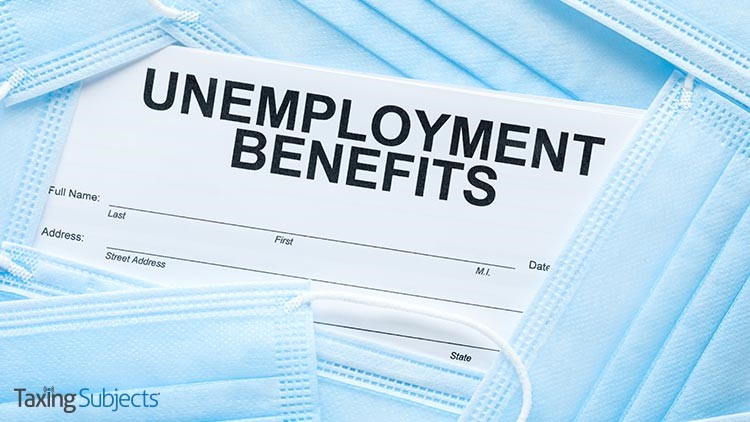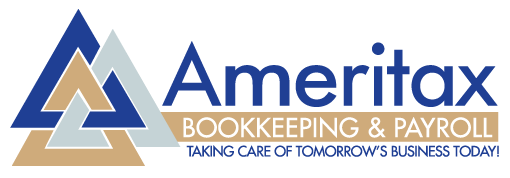by Ameritax | Feb 3, 2021 | Tax Tips and News
The nation has been weathering nearly one million weekly initial unemployment claims since the beginning of the pandemic. For many qualifying Americans, unemployment insurance benefits are the only thing preventing food insecurity and homelessness while trying to find a new job. Unfortunately, some still have not received their benefits.
The Internal Revenue Service warns that identity thieves have been targeting unemployment benefits, using stolen personally identifiable information to swipe the much-needed payments. Compounding the problem of not receiving unemployment compensation, those benefits are taxable—and issuing state won’t know the money hasn’t been received unless taxpayers notify them.
How do I know that my unemployment benefits have been stolen?
Receiving Form 1099-G, Certain Government Payments, for unemployment benefits that have not arrived in the mail or been deposited in a designated bank account can be a sign that you are the victim of identity theft unemployment benefits fraud.
What should I do if I receive a Form 1099-G for unemployment benefits I didn’t receive?
Getting an incorrect Form 1099-G for unemployment requires immediate action from the beneficiary. Whether a first-time recipient or having previously received unemployment compensation, affected taxpayers might not know what to do. So, we asked Drake Software Chief Compliance Officer Suzanne Vanderpool to explain a common misconception for reporting an incorrect Form 1099-G and identity theft unemployment fraud.
“I am concerned there will be confusion on how to report the identity theft associated with unemployment benefits,” Vanderpool says. “Unlike identity theft of a taxpayer’s e-filed returns, taxpayers do not need to file a Form 14039, Identity Theft Affidavit with the IRS. Unemployment benefits are issued by the states, and the taxpayer must request a corrected Form 1099-G from the state reporting the income.”
Since hundreds of thousands of Americans continue to file unemployment claims every week, it’s possible that some will receive an incorrect Form 1099-G too close to the tax filing deadline to submit a correct form to their state. In this situation, the IRS says affected taxpayers still need to request a new 1099-G from their state, but they shouldn’t wait for it to arrive before filing a tax return.
“Taxpayers who are unable to obtain a timely, corrected form from states should still file an accurate tax return, reporting only the income they received,” the IRS explains. “A corrected Form 1099-G showing zero unemployment benefits in cases of identity theft will help taxpayers avoid being hit with an unexpected federal tax bill for unreported income.”
What can I do to protect myself from identity theft tax refund fraud?
The best way to protect yourself from identity theft tax refund fraud is a combination of good data security habits and adopting IRS-issued prevention tools.
Here are some commonly used data security tips:
- Install and activate security software
- Keep all installed software updated—even your operating system, word processor, and games
- Learn the common signs of phishing scams
- Don’t open emails from unknown senders
- Don’t click links and attachments in emails—even from someone you know
- Don’t scan QR codes in emails or web ads from unknown or unsolicited senders
- Never provide private information in emails, SMS, or the phone
The IRS has a specific tool for preventing identity theft tax refund fraud: an Identity Protection Personal Identification Number, or IP PIN.
“An Identity Protection PIN is a six-digit number that prevents someone else from filing a tax return using a taxpayer’s Social Security number,” the IRS writes. “The IP PIN is known only to the taxpayer and the IRS, and this step helps the IRS verify the taxpayer’s identity when they file their electronic or paper tax return.”
Check out the following resources to learn more about identity theft and claiming unemployment benefits:
Source: IR-2021-24
– Story provided by TaxingSubjects.com
by Ameritax | Feb 2, 2021 | Tax Tips and News
The COVID-19 pandemic has caused significant financial strain for millions of taxpayers. From job losses and business closures to medical bills and lost revenue, unexpected costs and hardships have threatened to sink American families’ finances.
While unemployment benefits, paid sick leave, Payroll Protection Program loans, and stimulus money have helped some stay afloat, many have been forced to reach into savings and retirement plans to make ends meet. Fortunately, there is help for taxpayers who qualify for a provision of the CARES Act. It’s called a Coronavirus-Related Distribution, or CRD.
How does the Coronavirus-Related Distribution work?
The law allows qualified individuals—more on that in a minute—to withdraw up to $100,000 from their retirement accounts in 2020 without the 10% early distribution penalty for those under 59 1/2 years of age.
The income from the withdrawal should be reported on Form 1099-R, Distributions from Pensions, Annuities, Retirement, or Profit-Sharing Plans, IRAs, Insurance Contracts, etc., in three equal amounts over three years. The law gives taxpayers three years to spread the income out for tax purposes, but they’ll still be responsible for taxes on the withdrawal on a ratable three-year basis. So, if they don’t pay taxes on at least a third of the withdrawal in 2021, they’ll have to do it later—plus possible penalties.
Many taxpayers will take advantage of spreading the tax liability of their CRD distribution over three years, but others may prefer to pay tax owed in a single year. Those who choose to pay everything off in one year will still need to report the distribution on Form 1099-R.
Unfortunately, Congress has declined to extend the withdrawals past 2020.
Dec. 30, 2020, was the last day to take a CRD. However, if a taxpayer took a retirement distribution in 2020 and otherwise would qualify for a CRD but didn’t notify their plan provider at the time of the distribution that it would be a CRD, it is still possible to qualify. They just need to document and report the exception when they file Form 8915-E.
How do taxpayers pay back the Coronavirus-Related Distributions?
So, there are basically three payback options:
- Pay back the withdrawals within three years and escape any income tax on the total amount;
- Take longer than three years to pay back the withdrawal total and pay the income tax;
- Skip the payback altogether and pay the income tax (but pocket the withdrawal).
Remember that a plan has to allow such withdrawals to qualify for the tax break. Not all plans qualify, but most do.
Taxpayers qualify for a CRD if they, their spouse or dependents were diagnosed with the virus or if they had adverse financial consequences such as having a loss of income or being unable to work due to the pandemic.
For further reference, the IRS has a whole page of Coronavirus-related questions and answers for retirement plans.
What Coronavirus-Related Distributions payback plan should taxpayers take?
Like many tax-related issues, the best course depends on a taxpayer’s circumstances.
Generally, the consensus seems to be that the most efficient route is to pay back the withdrawal over the prescribed three years, and to file amended returns to recoup the tax already paid.
Ed Slott, writing for AARP, says the other two options share one flaw: If CRD withdrawals aren’t paid back, you don’t have those funds later for retirement.
Again, a major consideration will be the taxpayer’s own situation.
Slott also has some advice if a taxpayer’s retirement fund doesn’t allow CRDs.
“If yours does not, you can still withdraw the funds as a hardship 401(k) distribution and then treat them as a CRD on your personal tax return,” Slott writes.
For those taxpayers actively saving for retirement, Slott advises to first tap into other non-retirement assets if possible before decreasing your retirement funds.
He also strongly advises against using a Roth IRA for a CRD withdrawal. “It’s too valuable. It’s growing tax-free, and you don’t want to put a dent in that tax-free compounding. That’s your most tax-efficient and productive retirement account,” he stresses.
The key here, tax pros say, is to defer taxes. And in this case, the law allows the taxpayer to get those taxes back.
Some tax professionals also worry that many taxpayers just won’t be able to pay back the withdrawn retirement funds, possibly setting themselves up for a bigger tax bill later.
Getting a loan from one’s 401(k) isn’t necessarily the best option either. Ed Slott says while a loan from your 401(k) would be tax-free, it would have to be paid back within a strict timeframe or they would be taxable.
“You may be better off taking a CRD than getting involved with a 401(k) loan commitment and the resulting repayments and paperwork,” Slott writes. “With the CRDs, you can repay any amount you wish, on your own schedule, or not.”
Sources: “How to Take Money From Your Retirement Account Because of Covid-19“
– Story provided by TaxingSubjects.com



 Ameritax
Ameritax